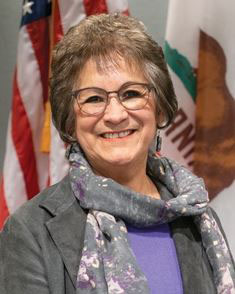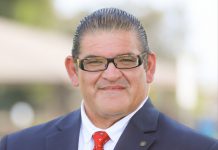By Rebecca J. Garcia, Watsonville Mayor
We are experiencing a crisis with the Covid-19 worldwide pandemic. We also are in a crisis with climate change. It is anticipated we have 10 years left to avoid the worst consequences of climate change. In 2015 the City of Watsonville approved a Climate Action Plan. In the short term, we have been successful in reducing carbon emissions and in conserving energy. In year five we are now updating and revising our plan so it will be a Climate Action and Adaptation Plan (CAAP). The adaptation will be based on the 2020 Local Hazard Mitigation Plan (LHMP) which prepares for floods, fire hazards, sea-level rise, and beach erosion. Climate change has an impact on all of these. Our Plan process will address climate mitigation, climate adaptation, stakeholder & community engagement, environmental justice and establish a 2030 CAAP web application.
Through the California Office of Emergency Services Pre-Disaster Mitigation Grant, the City is incorporating climate change in all current and future planning efforts. The LHMP combined with the updated CAAP will allow us to address a more complex system of climate change. The plan is not being developed in isolation but will build on our efforts with our previous CAP, our Urban Greening Plan, and with our Complete Streets to School Plan.
The goals of our plan are based on state legislation and on an executive order. Senate Bill 32 mandates statewide greenhouse gases (GHG) emissions reduction of 40% and the executive order, B-55-18 identifies carbon neutrality as a goal by 2045. To achieve this there will need to be stakeholder engagement and community engagement. This is essential to developing a plan that will have political, cultural and financial support for the required priorities. The stakeholders identified so far are: Association of Monterey Bay Area Governments (AMBAG), Central Coast Regional Climate Collaborative, Pajaro Valley Chamber of Commerce and Agriculture, Regeneración, Watsonville Wetlands Watch, Monterey Bay Economic Partnership and the agriculture industry. To reach the community during this pandemic the tools we will use will be bilingual mailers, phone calls, posts and videos on social media, and the CAAP web application. There will be two online surveys to offer feedback, provide new ideas and address the pros and cons of key issues and initiatives. Please take a few minutes to respond to our surveys. It is important that you voice your concerns and experiences with us.
Repair and restoration will also be part of our plan. We will need to identify existing and emerging technologies and techniques to sequester carbon. Our agriculture industry will be able to identify how to take carbon from the atmosphere and store it into the soil. Sequestering of carbon creates more soil fertility. The City will definitely need to plant more trees to sequester. Other strategies will need to be identified to sequester. We want to restore our natural world into a more safe and healthy state.
To assist the community in the process for our new plan a 2030 Web application will be developed. The CAAP web application will support the selection, monitoring, and implementation of the strategies provided. In addition to surveys included for feedback, the users will interact with the data through maps, charts and graphics. And it will have bilingual access.
Senate Bill 1000 mandates that all jurisdictions must address environmental justice issues. The intent is to reduce the environmental health impact that adversely affects residents in disadvantaged communities. In the Pajaro Valley, the number one issue is extreme heat. In the City we can address this by adding canopy cover by planting more trees. We can have lighter colored pavements and add more parks. However, in our agricultural fields, the farmworkers have no protection from that heat. Often some faint from heat exhaustion. Or they are only permitted to work a few hours which means a smaller paycheck. Climate change leads to that extreme heat and we must reduce it.
The plan will build climate resilience within the infrastructure of the city. But what can individuals do? I realized I had an obligation to address climate change as an individual so I decided to use my car less. The single largest carbon emissions source in the City is on-road transportation. So instead of using my car to go to the mall, I walk. Instead of using my car to go buy groceries, I walk. Instead of using my car to go to the bank, I walk. What can you do to address climate change? Remember climate change is a social justice issue. You are part of the community that needs to resolve the problem.
Mayor’s Update is a recurring column from Watsonville’s Mayor, Rebecca Garcia. Her opinions are her own and not necessarily those of the Pajaronian. Contact Garcia at re************@***************le.org.













